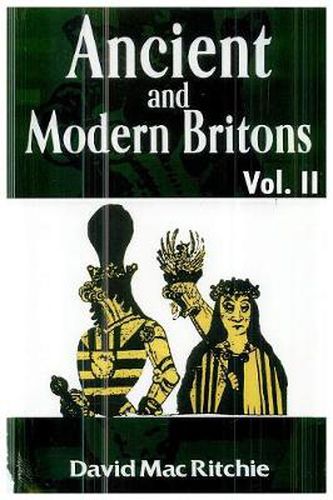Readings Newsletter
Become a Readings Member to make your shopping experience even easier.
Sign in or sign up for free!
You’re not far away from qualifying for FREE standard shipping within Australia
You’ve qualified for FREE standard shipping within Australia
The cart is loading…






This title is printed to order. This book may have been self-published. If so, we cannot guarantee the quality of the content. In the main most books will have gone through the editing process however some may not. We therefore suggest that you be aware of this before ordering this book. If in doubt check either the author or publisher’s details as we are unable to accept any returns unless they are faulty. Please contact us if you have any questions.
Whoever has gone into one of our Antiquarian Museums, and glanced with some curiosity, and perhaps with growing interest, at the withered fragments of canoes, preserved from total decay by the peat out of which they were dug, –at the stone heads of weapons whose handles have rotted long ago, –at the flint knives and arrow-heads, at the sun-dried pottery, –at the gaudy beads of amber or of colorued glass, –at the combs and ornaments curiously carved out of bone, –and alt all such other relics of a remote past, –has soon, in all likelihood, found himself speculating upon the nature of the people who made and used these things. The things themselves are plainly allied to the weapons and ornaments of existing savage races, and we know that the people vaguely spoken of as Ancient Britons, to whom these articles are attributed, were themselves allied to such races by community of custom. They wore little or no clothing, they tattooed their bodies and faces, they painted themselves blue or green, and some tribes smeared themselves over with iron ore; some of them are stated to have been cannibals: –could all such resemblances have existed if the races themselves, however far separated now, had not all belonged to a common stock? Can there be community of custom, apparent in most minute details, without there being community of blood?
$9.00 standard shipping within Australia
FREE standard shipping within Australia for orders over $100.00
Express & International shipping calculated at checkout
This title is printed to order. This book may have been self-published. If so, we cannot guarantee the quality of the content. In the main most books will have gone through the editing process however some may not. We therefore suggest that you be aware of this before ordering this book. If in doubt check either the author or publisher’s details as we are unable to accept any returns unless they are faulty. Please contact us if you have any questions.
Whoever has gone into one of our Antiquarian Museums, and glanced with some curiosity, and perhaps with growing interest, at the withered fragments of canoes, preserved from total decay by the peat out of which they were dug, –at the stone heads of weapons whose handles have rotted long ago, –at the flint knives and arrow-heads, at the sun-dried pottery, –at the gaudy beads of amber or of colorued glass, –at the combs and ornaments curiously carved out of bone, –and alt all such other relics of a remote past, –has soon, in all likelihood, found himself speculating upon the nature of the people who made and used these things. The things themselves are plainly allied to the weapons and ornaments of existing savage races, and we know that the people vaguely spoken of as Ancient Britons, to whom these articles are attributed, were themselves allied to such races by community of custom. They wore little or no clothing, they tattooed their bodies and faces, they painted themselves blue or green, and some tribes smeared themselves over with iron ore; some of them are stated to have been cannibals: –could all such resemblances have existed if the races themselves, however far separated now, had not all belonged to a common stock? Can there be community of custom, apparent in most minute details, without there being community of blood?